RESPONSE TO MOVING OBJECT AS A QUALIFICATION CRITERION FOR TEAM SPORTS
Фотографии:
ˑ:
Professor, Ph.D. M.M. Polevshchikov
Mari State University, Yoshkar-Ola
Associate professor, Ph.D. N.I. Palagina
Mari State University, Yoshkar-Ola
Professor, Dr.Tech. V.V. Rozhentsov
Volga State University of Technology, Yoshkar-Ola
Keywords: sport, team sports, qualification, response to moving object.
Introduction
The most important and at the same time the most challenging primary goal in any study of the movement sequence performance efficiency, in opinion of S.V. Golomazov, is to find a set of the most clear and specific indicators for the process efficiency rating. In this context, it might be most convenient and appropriate to apply process accuracy indicators as the key efficiency criteria [3]. As far as team sports are concerned, the athletes need to be very fast in assessing competitive situations and responding to them with adequate decisions performed by technically perfect motor actions [16]. The motor action performance efficiency is largely determined by the individual motor qualities [7] that may be basically characterized by the movement speed and accuracy – that may be interpreted as the degree of precision of the space-, time- and strength-specific performance indicators of the movement sequence [5].
It is traditional in applied fields of mathematics to rate accuracy as a value opposite to the value of standard deviation from the target. In competitive sport practice, analysts normally apply the method of the final result accuracy rating for a single movement or movement sequence based on the probability of the designated area being hit. The method normally generates two rates [3]: one based on the alternative choice (yes or no); and the other based on the (percentage) ratio of successes vs. losses (or hits vs. misses) in a series of attempts.
S.V. Golomazov found that quantitative accuracy rates of the same motor action performance attempts calculated based on the success probability and standard deviation – vary and follow different patterns when conditions of the same task are changed [3]. This is the reason for the researchers to make resort to different interpretations of the same facts when it comes to discussions and comparisons of the study findings. Issues of the motor action accuracy ratings for different sport disciplines were addressed in works [6, 17, 18]; qualification issues were considered in works [1, 2, 8, 9]; issues of the motor action accuracy rating based on the response to moving object were covered in works [4, 15, 21]; and the issues of the response to moving object time rating were subject to works [10-12, 14, 20].
Objective of the study was to develop a motor action accuracy criterion to qualify athletes as prospects for team sports.
Methodology and structure of the study
Tested athlete was requested to look at a circle on the screen with immovable mark 1 and movable point object 2 that rotated in the circle at a preset speed: see Figure 1 hereunder.
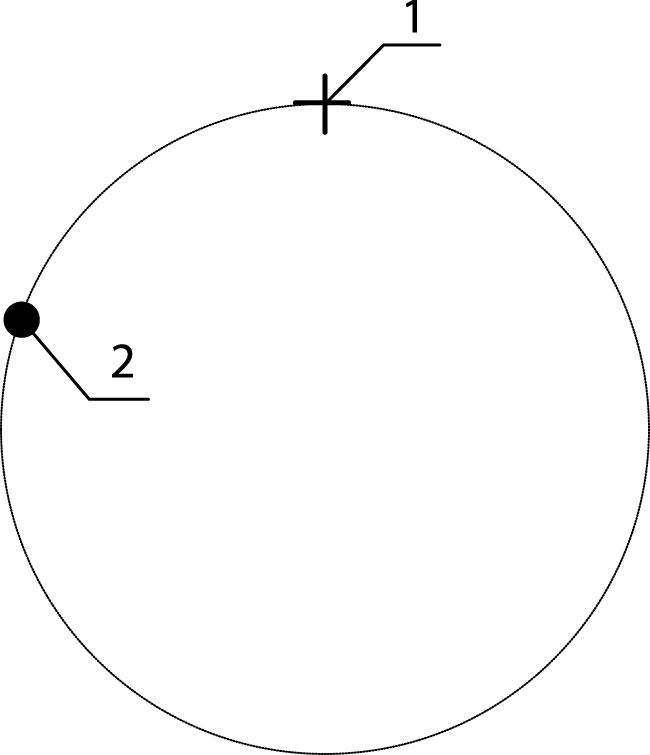
Figure 1. Response to moving object test design: please find explanations in the text.
The tested athlete watching the rotating point object 2 was requested to press the stop button at the moment when the moving point object hits mark 1 thereby stopping the object rotation. The analyst computed the mismatch error for the stopped object deviation from the mark, with the late response being rated as positive and the early response as negative; and then, with some preset time, the point object automatically started rotating again for the next try.
The tested athlete was requested to perform the above test procedure in a preset number of attempts, followed by formation of the error variation data set to present mismatches of the point object placements on the mark, and then a mismatch error variation range R was computed using the following formula [19]:
R= tmax – tmin,
with tmax and tmin meaning the maximum and minimum values of the variation range, respectively; with the relevant interval on the linear scale being marked in between these maximum and minimum values.
Qualification of the athletes was performed based on positions of the mismatch error variation ranges on the scale, with the preference being given to such intervals (indicative of the maximum-to-minimum error variation ranges, i.e. presenting mismatches of the point object being placed on the mark) that were found most symmetrical versus the zero point and at the same time ideally the shortest, i.e. reflecting the shortest variation range of the object vs. mark mismatch error [13].
Results and discussion
Subject to the study were 15 adolescent 8 years old students of Children’s and Youth Sport School. Student S test, for example, resulted in the following object vs. mark mismatch errors (measured in ms): 13, -15, 13, 10, -10, -1, 13, 5, -1, 4, as presented on Figure 2 hereunder.
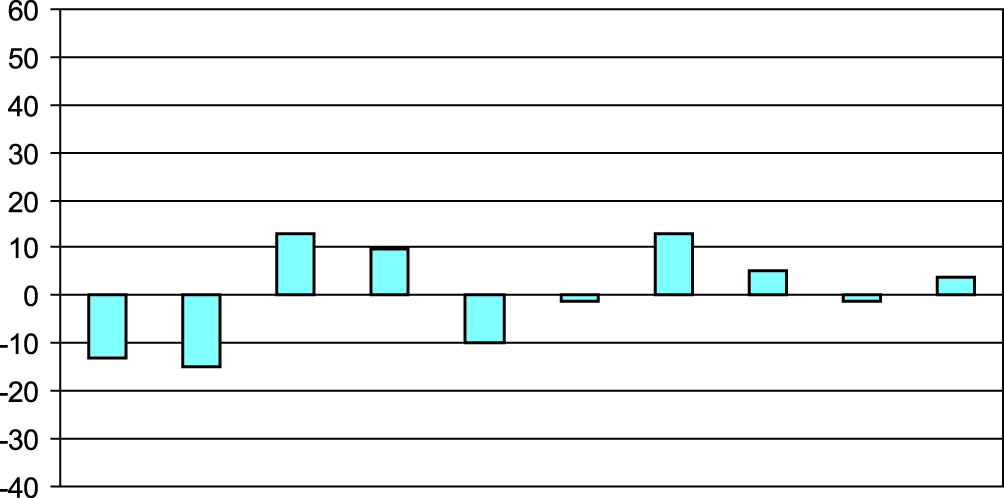
Figure 2. Student S test data, with the attempts (to stop moving object on the mark) numbered on the horizontal axis; and the vertical axis presenting the object vs. mark mismatch errors (ms)
Student S showed the maximum absolute object vs. mark mismatch error of 15 ms; the maximum positive value of the mismatch error variation range of +13 ms; the minimum negative value of the mismatch error variation range of -15 ms; and the mismatch error variation range of 28 ms; with the object vs. mark mismatch error variation interval (in between the maximum and minimum values of the mismatch error) presented on Figure 5a hereunder.
Student M test showed the following object vs. mark mismatch errors (ms): 11, 5, -20, -10, -25, 10, -18, -38, 5, 19, as presented on Figure 3 hereunder.
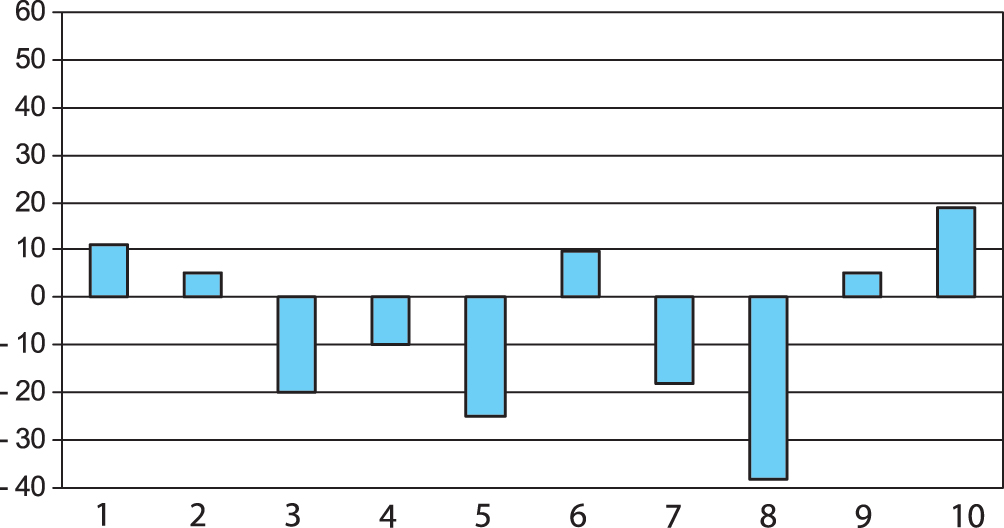
Figure 3. Student M test data, with the data presentation format being the same as on Figure 2.
Student M showed the maximum absolute object vs. mark mismatch error of 38 ms; with the maximum positive value of the mismatch error variation range of +19 ms; and the minimum negative value of the mismatch error variation range of -19 ms; and the mismatch error variation range of 57 ms; with the object vs. mark mismatch error variation interval presented on Figure 5b hereunder.
Student V’s test showed the following object vs. mark mismatch errors (ms): 18, -12, 5, 10, -29, 53, 37, 19, 13, 21, as presented on Figure 4 hereunder.
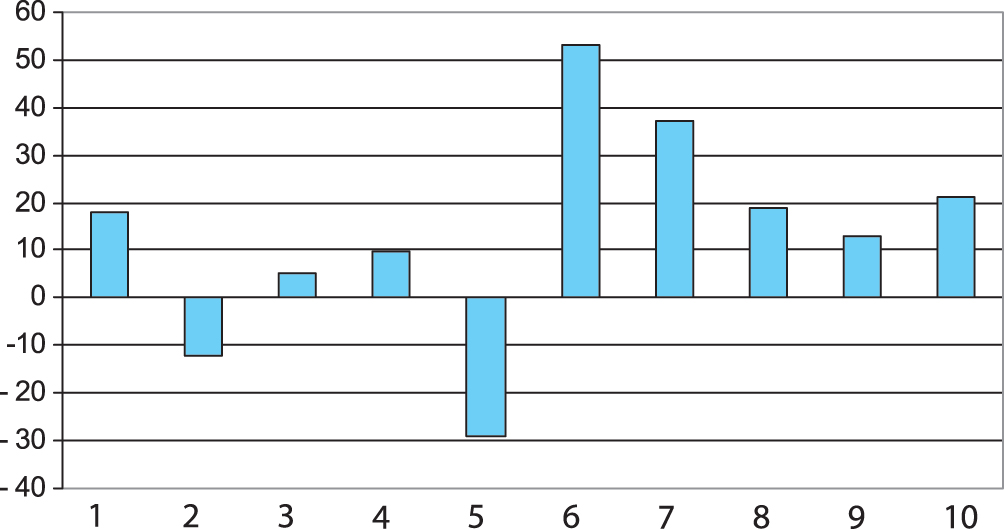
Figure 4. Student V test data, with the data presentation format being the same as on Figure 2.
Student V showed the maximum absolute object vs. mark mismatch error of 53 ms; with the maximum positive value of the mismatch error variation range of +53 ms; and the minimum negative value of the mismatch error variation range of -29 ms; and the mismatch error variation range of 82 ms; with the object vs. mark mismatch error variation interval presented on Figure 5c hereunder.
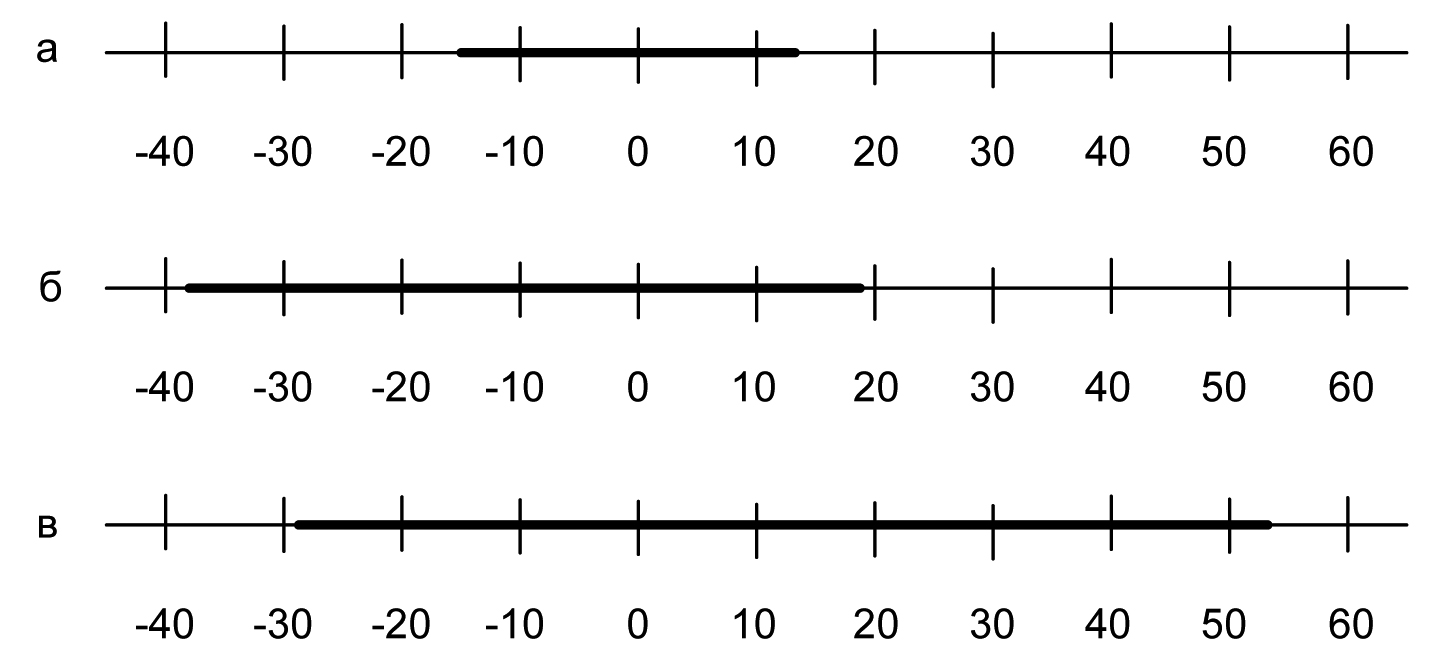
Figure 5. Test data of the subject athletes presented on the linear scale
Having analyzed the above test data of the subject athletes, we found the following: student S showed significantly shorter mismatch error variation range in the moving point object on mark placement test as compared to the test data of students M and V. The mismatch error interval position on the linear scale (presenting the point object on mark placement error variation range) for student S was fairly close to symmetrical in relation to zero point, whilst the same intervals of student V and student M were shifted to the positive and negative areas of the scale, respectively. These test data gave us the reasons to conclude that the motor action accuracy achieved by student S was notably higher than that of students V and M, and student S was qualified and recommended as a prospect for team sport trainings.
On the whole, the tests resulted in 4 students out of 15 being qualified and recommended as prospects for team sport trainings.
Conclusion
The study developed and offered the qualification test procedure for team sports based on the response to moving object tests. Subject to the pilot tests was a group of 15 adolescent 8 years old students of the Children’s and Youth Sport School. The tests resulted in 4 students out of 15 being qualified and recommended as prospects for team sport trainings.
References
- Botyaev, V.L. Stabil'nost' individual'nogo profilya razvitiya koordinatsionnykh sposobnostey kak kriteriy otbora i prognozirovaniya uspeshnoy spetsializatsii v slozhnokoordinatsionnykh vidakh sporta (Stability of individual profile of development of coordination abilities as criterion for qualification and predicting successful specialization in comprehensive coordination sports) / V.L. Botyaev, V.V. Apokin // Teoriya i praktika fizicheskoy kul'tury. – 2011. – № 7. – P. 87–90.
- Voronov, V.M. O psikhomotornykh i dukhovno-nravstvennykh determinantakh sportivnogo otbora v smeshannye edinoborstva (On psychomotor and moral determinants of sports qualification in mixed martial arts) / V.M. Voronov, A.A. Gorelov, V.P. Sushchenko, A.P. Khlopetskiy // Teoriya i praktika fizicheskoy kul'tury. – 2015. – № 2. – P. 54–56.
- Golomazov, S.V. Kineziologiya tochnostnykh deystviy cheloveka (Kinesiology of accuracy actions in man) / S.V. Golomazov. — Moscow: SportAkademPress, 2003. – 228 P.
- Zakamskiy, A.V. Otsenka tochnosti dvigatel'nykh deystviy sportsmena igrovykh vidov sporta (Evaluation of accuracy of motor actions of team athletes) / A.V. Zakamskiy, M.M. Polevshchikov, V.V. Rozhentsov // Uch. zapiski un-ta im. P.F. Lesgafta. – 2012. - № 3(85). – P. 86-90.
- Zatsiorskiy, V.M. Fizicheskie kachestva sportsmena (Athlete's physical qualities) / V.M. Zatsiorskiy. – Moscow: Fizicheskaya kul'tura i sport, 1970. – 200 P.
- Zyubanova, I.A. Sovershenstvovanie tochnosti dvigatel'nykh deystviy na osnove razvitiya myshechnoy koordinatsii v voleybole (Improving accuracy of motor actions based on development of muscle coordination in volleyball) / I.A. Zyubanova, V.A. Uskov, L.V. Kapilevich // Teoriya i praktika fizicheskoy kul'tury. – 2013. – № 2. – P. 71–74.
- Korenberg, V.B. Sportivnye vozmozhnosti i sposobnosti (Sports capacities and abilities) / V.B. Korenberg // Teoriya i praktika fizicheskoy kul'tury i sporta. – 2009. – № 3. – P. 3–9.
- Lysov, P.K. Morfofunktsional'nye i pedagogicheskie pokazateli sportivnoy perspektivnosti bokserov na etape sportivnogo sovershenstvovaniya (Morphofunctional and pedagogical indicators of boxers' sports prospects at the stage of sports skills improvement) / P.K. Lysov, I.A. Lysova, I.T. Vyal'shin // Teoriya i praktika fizicheskoy kul'tury. – 2009. – № 1. – P. 37–38.
- Pavlov, V.I. Otbor i podgotovka studentov dlya zanyatiy pauerliftingom (Qualification and training of students for powerlifting training sessions) / V.I. Pavlov, V.A. Tarasov // Teoriya i praktika fizicheskoy kul'tury. – 2013. – № 9. – P. 78–80.
- Pat. 2326595 Rossiyskaya Federatsiya, MPK A 61 V 5/16. Sposob otsenki vremeni reaktsii cheloveka na dvizhushchiysya ob'ekt (Patent 2326595 Russian Federation, IPC A 61 5/16. Method of estimation of reaction time to moving object in man) / A.V. Pesoshin, I.V. Petukhov, V.V. Rozhentsov; zayavitel' i patentoobladatel' Mariyskiy gosudarstvenny tekhnicheskiy universitet (applicant and patentee Mari State Technical University). – № 2326595/14; decl. 04.06.2007; publ. 20.06.2008, Bul. № 17.
- Pat. 2386395 Rossiyskaya Federatsiya, MPK A 61 V 5/16. Sposob testirovaniya reaktsii cheloveka na dvizhushchiysya ob’ekt (RF Patent 2386395, IPC A 61 B 5/16. Method of testing human reaction to a moving object) / T.A. Lezhnina, V.V. Rozhentsov; applicant and patentee Mari State Technical University. – # 2008115066/14; appl. 16.04.2008; publ. 20.04.2010, Bul. # 11.
- Pat. 2408265 Rossiyskaya Federatsiya, MPK A 61 V 5/16. Sposob otsenki vremeni ekstrennoy reaktsii cheloveka na dvizhushchiysya ob'ekt (RF Patent 2408265, IPC A 61 B 5/16. Method of estimating time of emergency response to a moving object in man) / A.A. Pesoshin, T.A. Lezhnina, V.V. Rozhentsov; applicant and patentee Mari State Technical University. – # 2009141147/14; appl. 06.11.2009; publ. 10.01.2011, Bul. # 1.
- Pat. 2534615 Rossiyskaya Federatsiya, MPK A 61 V 5/00. Sposob otbora dlya zanyatiy igrovymi vidami sporta (RF Patent 2534615, IPC A 61 B 5/00. Method of qualification for competitive sports practices) / N.A. Kudryavtsev, A.V. Zakamskiy, M.M. Polevshchikov, V.V. Rozhentsov; applicant and patentee Mari State Technical University. – # 2013131306/14; appl. 08.07.2013; publ. 27.11.2014, Bul. # 33.
- Petukhov I.V. Sposob i tekhnicheskoe obespechenie otsenki vremeni reaktsii cheloveka na dvizhushchiysya ob'ekt (Method and technical arrangements of measurement of time of human response to a moving object) / I.V. Petukhov, A.V. Pesoshin, V.V. Rozhentsov // Vestnik Kazanskogo gosudarstvennogo tehnicheskogo universiteta im. A.N. Tupoleva (Herald of Kazan State Technical University n.a. A.N. Tupolev). – 2008. – # 2(50). – P. 22–26.
- Polevshchikov M.M. Tochnost’ dvigatel’nykh deystviy kak kriteriy otbora dlya zanyatiy igrovymi vidami sporta (Precision in movements as qualification criterion for competitive sports) / M.M. Polevshchikov, V.V. Rozhentsov // Uch. zapiski un-ta im. P.F. Lesgafta. – 2013. – # 6(100). – P. 103–108.
- Radchich I.Yu. Podkhody k uglublennoy individualizatsii i tekhnologii monitoringa podgotovki igrokov v svyazi s problemoy olimpiyskogo otbora (Approaches to advanced individualization and training monitoring technology in team sports in connection with the problem of Olympic qualification system) / I.Yu. Radchich // Teoriya i praktika fiz. kultury. – 2003. – # 11. – P. 16–19.
- Sidash, A.L. Ispol’zovanie lokal’nykh otyagoshcheniy dlya povysheniya tochnosti verkhney podachi voleybolistami (Local weights to improve overhand serve performance in volleyball) / A.L. Sidash // Teoriya i praktika fizicheskoy kultury. – 2012. – # 1. – P. 79-80.
- Khaupshev, M.H. Tochnost’ dvigatel’nykh deystviy kak kriteriy otsenki geneticheskoy predraspolozhennosti k sportivnoy deyatel’nosti (Accuracy of motor acts as a criterion for assessing genetic predisposition to specific sports activity) / M.H. Khaupshev, A.M. Tkhazeplov // Teoriya i praktika fizicheskoy kultury. – 2011. – # 11. – P. 54-57.
- Shalyt, A.I. Variatsionny ryad (Variational series) / A.I. Shalyt // Matematicheskaya entsiklopediya (Mathematical encyclopedia). P. 1. Ed. by I.M. Vinogradov. – Moscow: Sovetskaya entsiklopediya, 1977. – P. 603.
- Pesoshin, A.V. Reaction Training on a Moving Object / A.V. Pesoshin, T.A. Lezhnina, V.V. Rozhentsov // European Researcher. International Multidisciplinary Journal. – 2012. – V. 28. - № 9-1. – P. 1355-1359.
- Polevshchikov, M.M. Competitive Sports Atletes’s RanKing Method / M.M. Polevshchikov, V.V. Rozhentsov // European Researcher. International Multidisciplinary Journal. – 2012. – V. 23. - № 6-1. – P. 905-909.
Corresponding author: mmpol@yandex.ru




